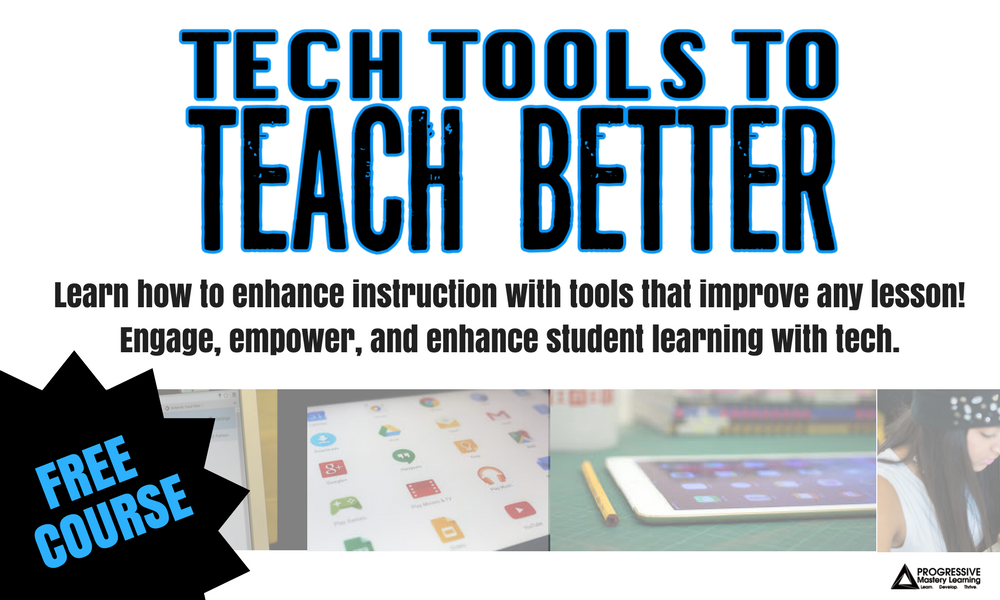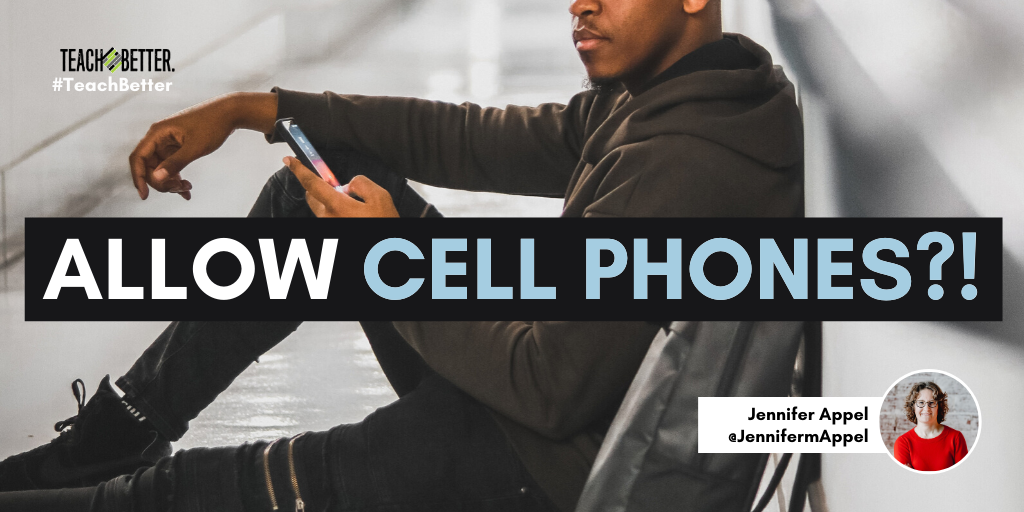TL;DR:
- The value we place on cell phones.
- Three steps toward allowing cell phones in your classroom… responsibly.
I got my first cell phone in 1996 when I was in college. It looked like a brick– huge! You could only call programmed numbers from it, and I think I only had 3 numbers I could actually dial.
After that, I upgraded to a flip phone. Then came the Palm Pilot. Eventually, I switched over to the iPhone.
I have seen cell phones from the very beginning of existence and resisted them for a long time. My first iPhone was the 5th generation, so I was not eager to jump on the bandwagon.
But now I can’t live without my phone. It is part of who I am, and you can accomplish so many cool tasks with your phone. I can’t imagine living, let alone teaching, without it. Heck, I can’t even imagine LEARNING WITHOUT IT!
As adults why are we so resistant to having kids use cell phones?
We love them, but seem to hate them for students. Why is this?
I was one of these phone resisters before 2012. I’d often leave my cell phone in my purse and never got it out during class. While I was teaching, my students were never allowed to use their phones.
Then came Sandy Hook and everything changed. I remember hearing about a teacher who was able to call for help because she had her cell phone in her pocket. This stuck with me and ever since this moment, I keep my cell phone in my pocket for safety.
This horrific tragedy forever changed my philosophy about cell phones. Since that historic event, I allow my students to use cell phones in my classroom and I always have mine with me at all times.
That said, I believe that the only way students will learn about proper use with a cell phone is if they’re intentionally taught how and when to use them.
The only way students will learn about proper use with a cell phone is if they’re intentionally taught how and when to use them. Click To TweetSo what are the first steps to allowing cell phones in your classroom?
Step 1 To Allow Cell Phones: Be Honest with Your Students
I let my students know from the very beginning that I will have my cell phone in my pocket or on my desk at all times. I will be respectful of them and not look at social media or texts while I am teaching. However, I will use my phone for educational purposes.
For instance, if they ask me a question I will use my phone, or I will go to my Google drive to look something up for them. I’ll post class content to social media in real time, run a keynote slideshow from my personal device, or play an episode of our student-led podcast for the entire class to hear.
I model cell phone appropriateness and I expect the same respect from them.
Step 2 To Allow Cell Phones: Consider Engagement
If your class is engaging and students are learning, they will not be distracted by outside sources. You will lose students if they are not engaged and having FUN.
Simply put, if they’re not truly engaged, cell phones will become a problem. I have never addressed the issue of cell phones in the podcast room when we are recording, or during a Skype chat or student presentation. That’s because students are focused and excited about what they’re learning.
There’s no time for outside distractions when the learning is flowing! Students are engaged and respectful of the environment.
Step 3 To Allow Cell Phones: Use Them
Students should use their phones for things they are best at. They can create videos, look up information quickly, calculators, read on the Kindle app, Skype/Facetime, take notes, access their Google drive, photos, etc.
I even have an all time favorite cell phone story. Two students working on a group project called a third student who was sick at home via Facetime. Despite the 3rd student not being at school, all three students were able to work and ultimately complete the group project on time.
In the past, working with an absent student would have been a pipe dream. However, when we shift away from compliance and maximize the power of these technological devices, we EMPOWER students to learn as we TEACH BETTER!
ARE YOU READY TO TEACH BETTER WITH PHONES?
Cell phones can be an awesome tool in the classroom, if you are willing to put in the time to intentionally teach about cell phones and how they can benefit everyone instead of being the enemy.
Check out our Award Winning Culture Podcast where my students ask George Couros, author of Innovator’s Mindset and Innovate Inside the Box, about cell phones and his policy of allowing them in schools.
[scroll down to keep reading]
About Jennifer Appel
Jennifer is a teacher and coach at Enterprise Middle School. She has been teaching for 21 years. Her passion for education comes from growing up in an education driven family (4th generation) and wanting to help and serve others. She is now driven to create an environment where all students are able to learn and become passionate about serving others.
In 2018, her school Enterprise Middle School known as “Wildcat Nation” was awarded the ASCD Whole Child Award for the State of Washington and the Global “Class Act Award” for creating a culture of excellence through kindness, service, and empathy. Additionally, they were selected as a finalist in the 2019 PBIS Film Festival and took top prize in the Community, Parents, and Staff category.
Jennifer has written blogs and lesson design for CharacterStrong. She was selected for the Washington State Reading Cadre and spent 10 years teaching graduate and undergraduate classes at Heritage University. Additionally, she’s spoken at state and national conferences on PBIS, Student Voice, and School Culture.
In 2018, Jennifer helped launch a blog about School Cultureand helped roll out a student-led leadership podcast called Award Winning Culture: Hosted by Wildcat Nation, which can be subscribed, listened or reviewed on iTunes Apple Podcasts, Stitcher, Google Play, Spotify, PodBean, and Libsyn.
Jennifer is also a member of the Teach Better Speakers Network.



